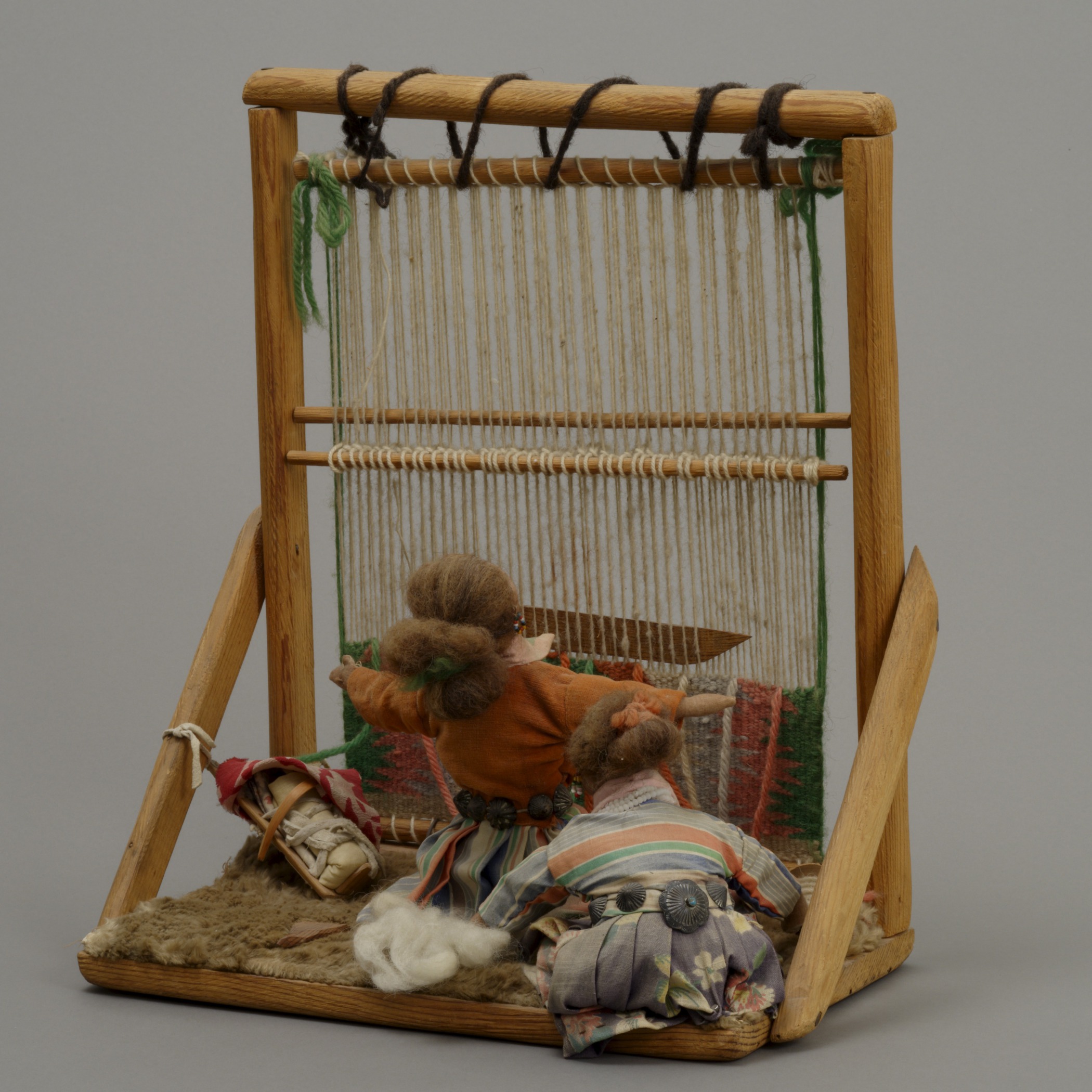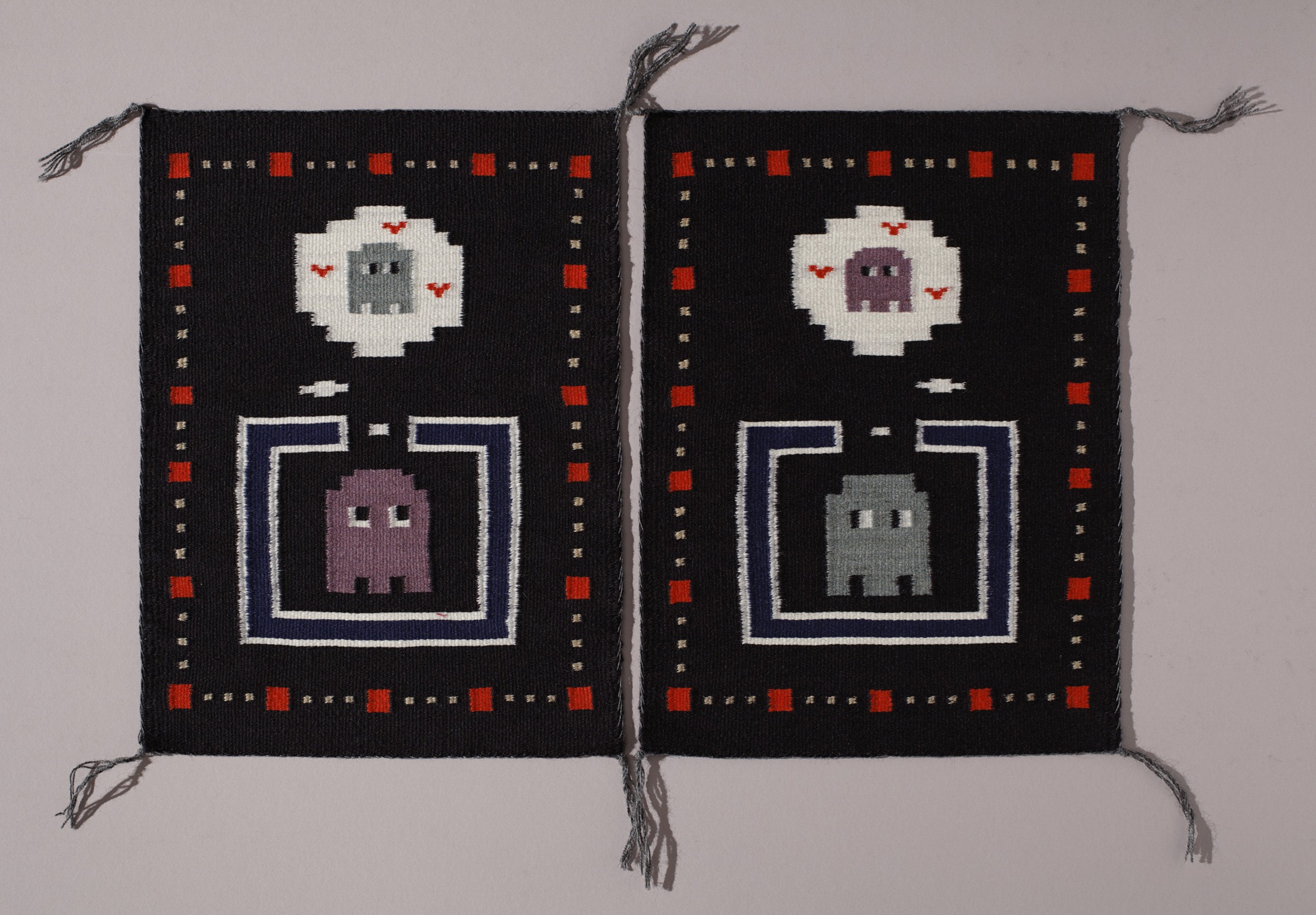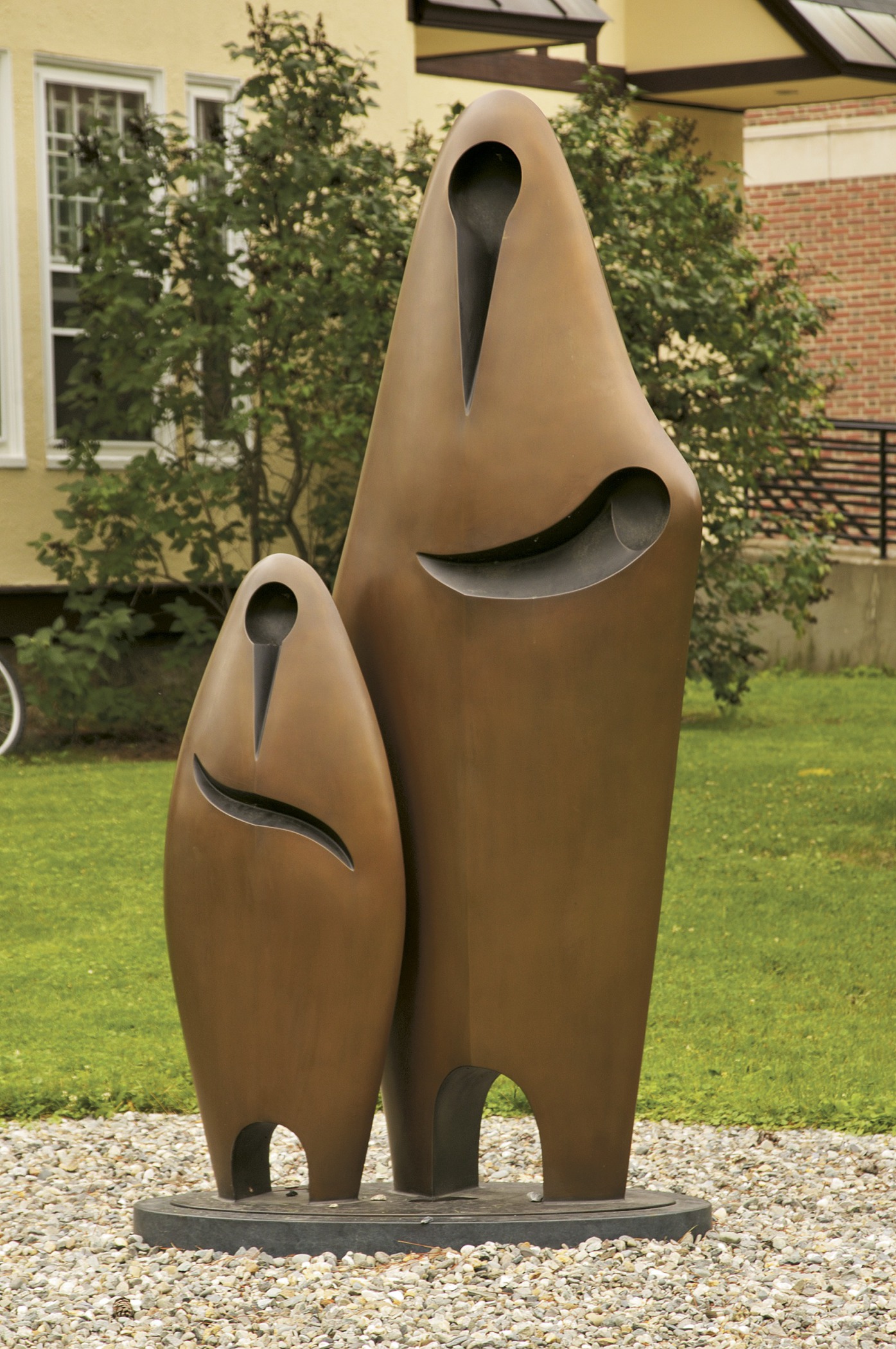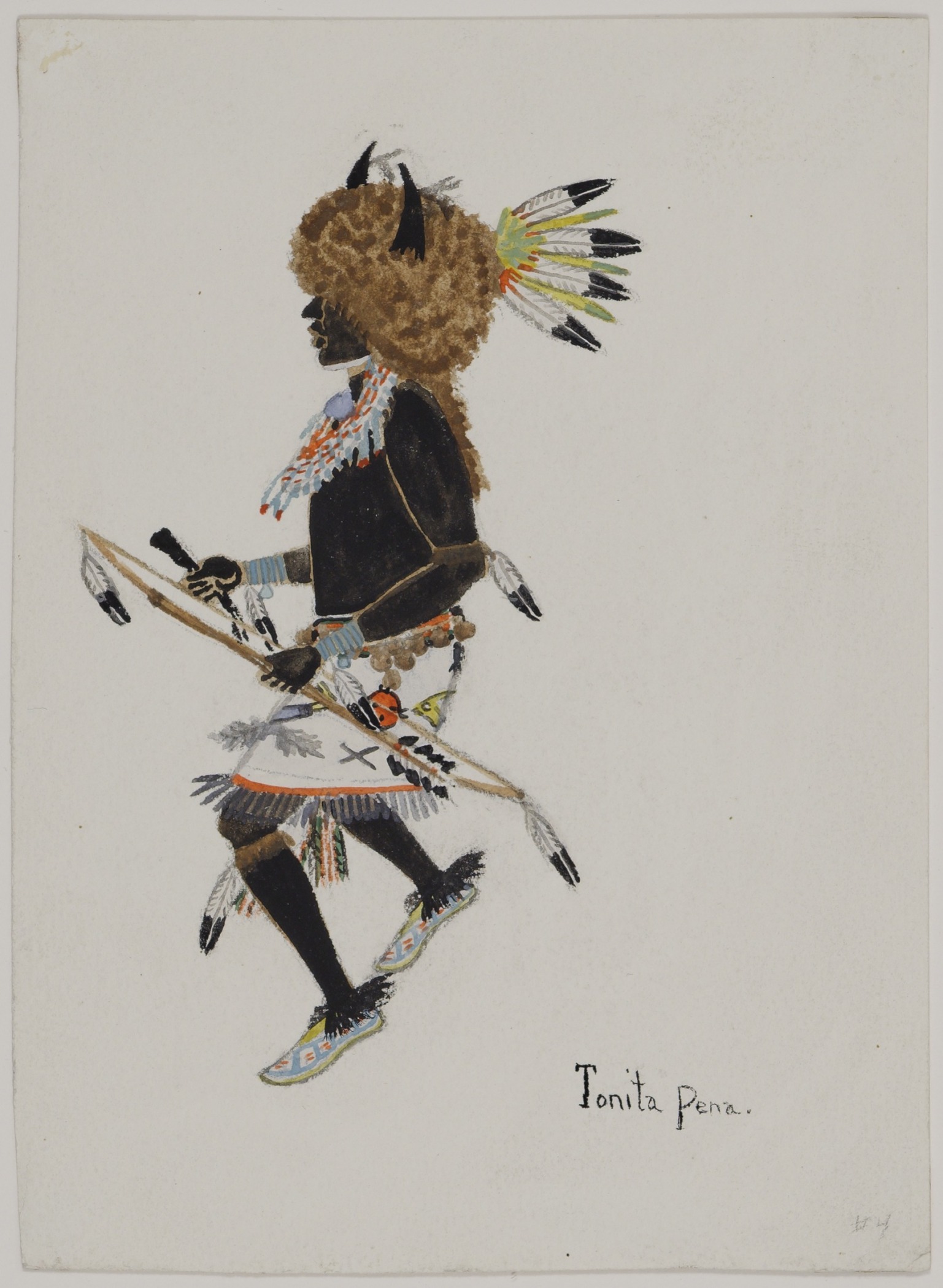Diné (Navajo), Arizona
Two Diné women, a loom, and a cradleboard with a child
- 1947
- Wool, cotton cloth, fur, glass trade beads, silver conches, turquoise, buckskin, and velour figures, mounted on a wood platform
- 14 1/4 × 12 3/4 × 7 1/2 in.
Hood Museum of Art, Dartmouth College: The Wellington Indian Doll Collection, Gift of Barbara Wellington Wells; 987.35.26765
visibilityLook & DiscussThis model illustrates two tasks traditionally performed by Diné (Navajo) women: weaving and childcare. Weaving was once exclusively a woman’s task among the Diné. Diné textiles were first used as clothing and saddle blankets. Toward the end of the 19th century, weavers began to make rugs for sale. Many Diné women helped to support their families with their weaving.
explore the object
In this scene (above left), one woman cards wool while another weaves. For comfort, they sit on a fur-covered wooden platform. They are weaving a typical Diné design on a large vertical loom. They are dressed in everyday Diné style, in long skirts, blouses, conch belts, and moccasins.
A child, in a cradleboard, or baby carrier, is attached to the loom by buckskin thongs. In this way, the baby can watch the women at work. It is wrapped in cotton blankets and laced to the cradleboard with buckskin strings. The cradleboard has a wooden arc with a cloth thrown over it to protect the baby from the sun.
The model demonstrates one approach to work and childcare in Diné communities. It also shows how large rugs like this one were the result of teamwork and cooperation among women.
related objects
Leonora Quanimptewa, American (Hopi), 1930–1999, Southwest wicker cradleboard, 1970. Wood, sumac, and leather, 28 3/4 × 10 5/8 × 8 1/4 in. Hood Museum of Art, Dartmouth College: Gift of Professor Alfred Frank Whiting; 170.9.25465.
Diné (Navajo), wood cradle board, 1972. Cedar, pine, and leather, 28 3/8 × 10 1/4 × 2 3/4 in. Hood Museum of Art, Dartmouth College: Museum Purchase; 173.4.25448.
A cradleboard is a Native American baby carrier. Babies feel secure when held tightly, and some type of swaddling occurs in most cultures around the world.
Cradleboards of the Southwest all have a unique feature, a sunscreen, to protect the baby from the hot desert sun. The visor or bar would be placed over the baby’s face. The small footboard would flip up for the baby to rest his or her feet.
Cradleboards were designed so that they could be leaned up against a shady tree, carried on a mother’s back, or hung on a wall. Diné cradleboards are often constructed out of wood, while Hopi cradleboards are constructed out of basketry material. The baby is wrapped in a soft cotton blanket and secured with buckskin straps to the board.
In some communities, cradleboards are still made or handed down as baby gifts.




